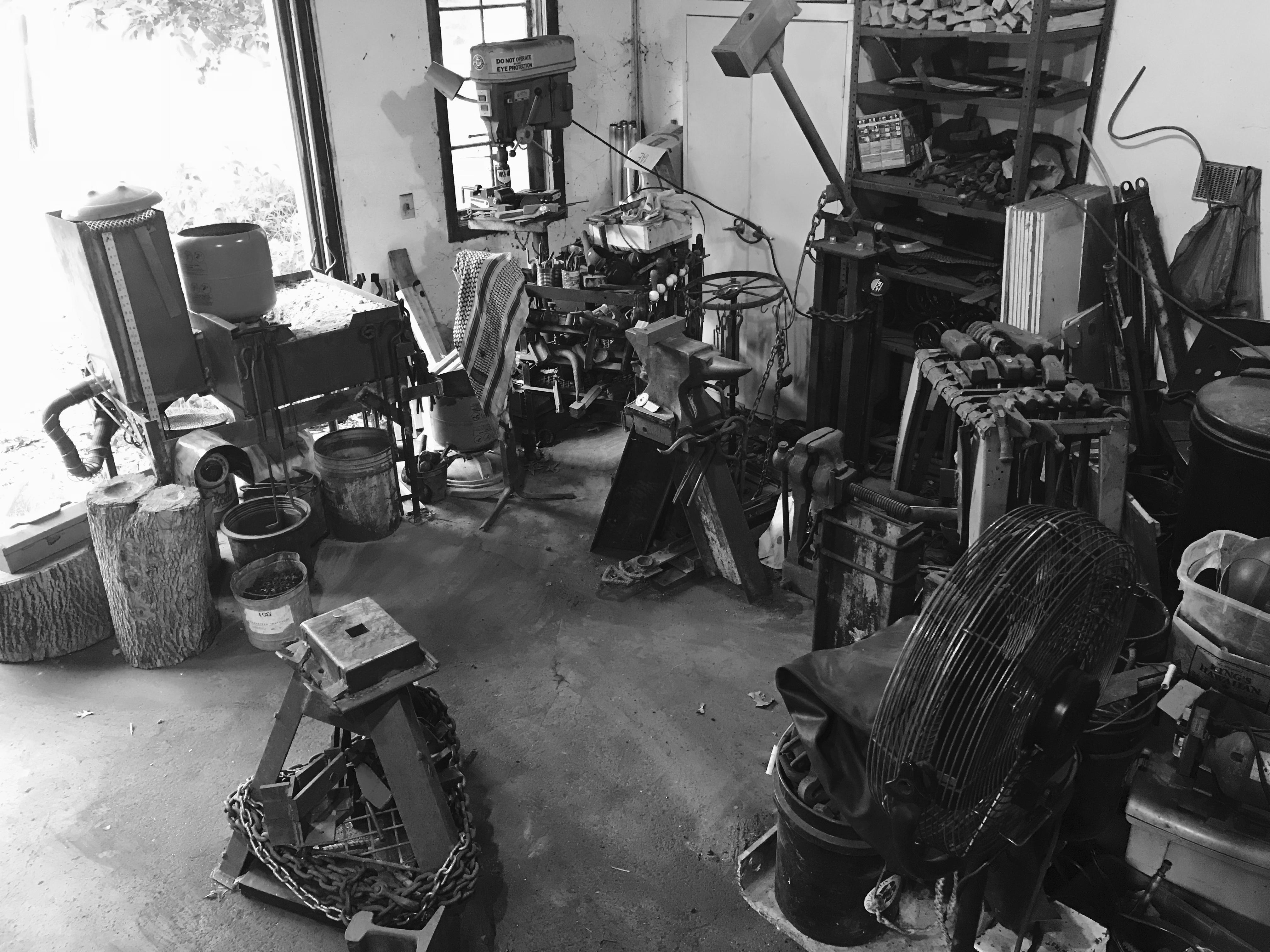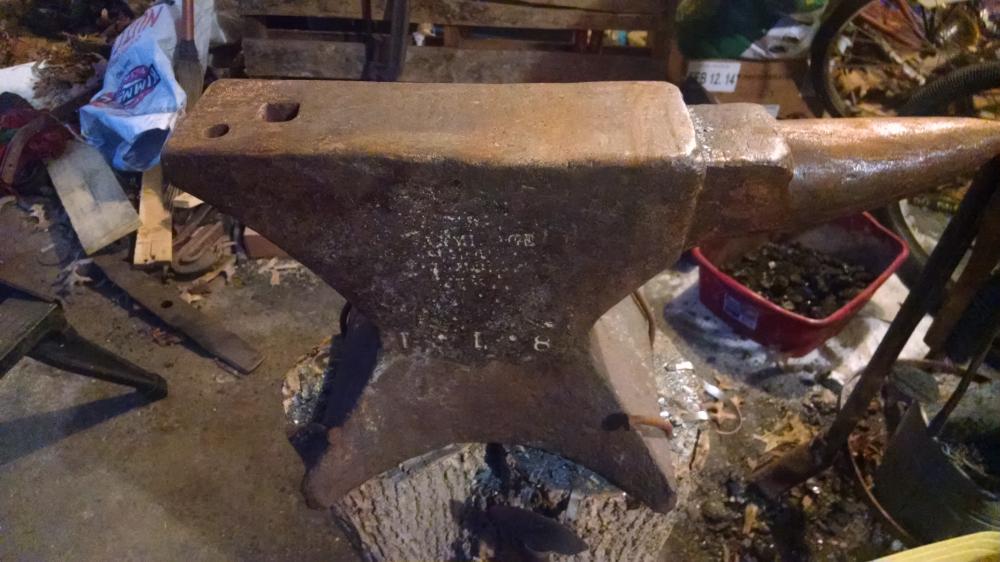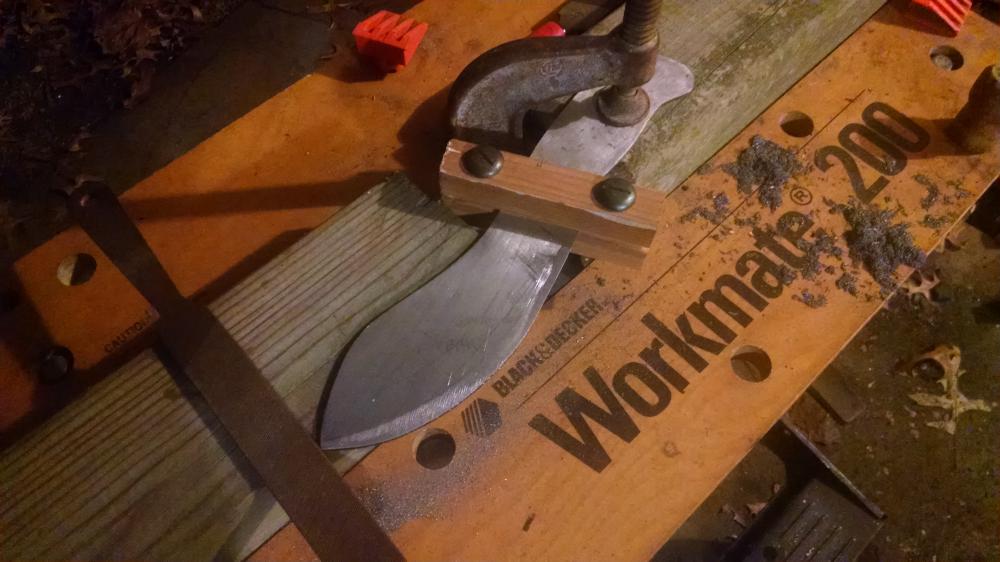-
Posts
19,427 -
Joined
-
Last visited
Content Type
Profiles
Forums
Articles
Gallery
Downloads
Events
Posts posted by JHCC
-
-
2 minutes ago, ausfire said:
My home forge has a half 200 litre drum that works well.
For those of you unfamiliar with the metric system, half of 200 litres is 100 litres.
-
I use an empty 25lb cat litter tub.
-
Mikey, are you talking about jcornell's forge?
-
2 minutes ago, beammeupscotty said:
Selling to a friend who may well have never seen a hand made bottle opener before is one thing. Selling on the open market where far more competent smiths are selling much better made openers for the same or lower prices is another. It is the latter context in which I was voicing an opinion on the value of his opener.
On the open market, I quite agree.
And your openers really are lovely. Just saying.
-
1 hour ago, beammeupscotty said:
At the risk of sounding like a complete XXXXXXX, I feel compelled to let you know that there are far better executed bottle openers selling for $25.00 on Etsy. I would refrain from posting yours for sale until you actually master the process of making them. The one you have posted here is very crude and IMO, not worth $25.00. With proper tooling and more experience you should be able to make a much more refined opener from a spike in about 30 minutes max.
Just for comparison, I sell my basic keychain opener for $25.00 at shows and a slightly more difficult and time consuming skull themed keychain opener for $30.00. My most expensive opener has a hops cone detail and sells for $75.00. I recently sold 4 of them in one day at a local crafts show. The hops opener takes me about 1 1/2 hours to make compared to about a half hour for the keychain openers. I make more per hour on the keychain ones, but still make the hops opener simply because I like it. On my most lucrative openers I make close to a dollar a minute for my time. On the least lucrative, about half that.
My comments are not meant to discourage you from making things. I hope you continue to do so. I just think you need a realistic understanding of where your work fits into the scheme of things and I'd suggest you might want to wait until you achieve a higher level of execution before you start thinking about selling them. Pricing needs to be a function of more than the time it takes you to make an item. It also needs to take into account your market and the workmanship and quality of your items compared to those you will be competing against. I live in the S.F. Bay Area and there is a lot of spendable income here. I can make very time consuming items and expect to be able to sell them for an amount that justifies the time involved in making them. There are many places in the country however, where I would not be able to sell the items I make for even half what I get for them here. Being realistic about your work will help you maintain the enthusiasm needed to reach a higher skill level than you currently enjoy.
beammeupscotty, you do beautiful work, and your openers are lovely. You deserve every penny you get for them.
Your advice to Forging Carver about refining technique and understanding market, workmanship, and quality is all very good, and I hope FC takes it to heart.
That said, saying his opener is "not worth $25" is totally off base. As in all sales transactions, the product is worth what the customer is willing to pay. In this case, that's twenty-five bucks. Let's all move on.
-
6 minutes ago, ThomasPowers said:
Working recycled steel at a proper heat is a mitzvah! ( a good deed done from religious duty. ) Now the bat mitzvah, involves using a piece of wood to work hot steel where you don't want to mess up the surface---straightening a twist for example...)
Barring any unforeseen accidents, of course.
-
47 minutes ago, Nobody Special said:
We also do bar mitzvahs. Feels weird to bring an anvil to a bar mitzvah, but there ya go.
Is that a round bar mitzvah or a square bar mitzvah?
-
Just now, Timothy Miller said:
What I'm really curious about is where did the vikings get their RR spikes?
RRaiding.
-
I see that the ebay listing is closed; did you get it?
-
Let's also keep in mind the original meaning of the word "traditional" -- from the Latin "traditio", to hand over. Thus, a tradition is something one possesses which was previously in someone else's possession. The opposite of tradition, in this sense, is "innovation", although innovations are frequently adopted into traditions and become part of them.
In our context, therefore, we can see that the smithing tradition is an ongoing tradition, with a continual series of changes and developments from the first rough pounding of meteoric iron to the sophisticated heat treatments of today's tool steel alloys. While smithing has retained many aspects of the "workmanship of risk" (see above) longer perhaps than other trades, it has nonetheless undergone the same process found in other trades: namely, the adoption of tools, techniques, and materials as they become available, especially as these increase efficiency and productivity.
It should also be noted that the method of handing down knowledge has undergone a similar evolution. The old progression from apprentice to journeyman to master (a system which made perfect sense in an age of rigid social stratification and before the advent of widespread literacy), for all its undeniable advantages, eventually made way to the social mobility of recent centuries and the easy sharing of information over distance, whether by the magazines of the nineteenth century or the internet of the twenty-first. Even the transmission of the most primative methods of bygone days is effected electronically, and practically all of us here on this forum learned and continue to learn our craft through a combination of hands-on instruction and practice, study of print media, and sharing of ideas and techniques online.
Thus, it is impossible to draw any meaningful distinction between "traditional" and "modern" techniques; the so-called "modern" methods (unless complete innovations) are merely more recent developments in the evolution of the smithing tradition. A smith might choose (for various reasons) to restrict himself or herself to techniques of a specific period, but that is a different matter entirely.
-
I just want to point out that while these discussions of what traditional means are certainly interesting and illuminating, the OP clearly and specifically asks "What does 'tradtional' mean?"
That, I must confess, I have no idea.
-
33 minutes ago, Fatfudd said:
From what i can see your anvil does not have a pritchel hole, that's why I said its date of manufacture is between 1820 and 1830. The only hole I see in your pictures is the hardy hole which would have been punched.
I think you may be thinking of TwistedCustoms's anvil. I'm the other guy with an M & H Armitage Mousehole; here it is:
-
6 hours ago, ThomasPowers said:
Don't forget that a lot of older anvils had pritchels retrofitted, usual way to determine if original or added is the earlier ones were punched and retrofitted ones were drilled...check the bottom of the heel for evidence of punching...
Well, I checked. I'm guessing punched, as there is a slight bulging on the underside, and I don't see any obvious drill marks inside the hole. Anything else I should be looking for?
-
6 minutes ago, ThomasPowers said:
Don't forget that a lot of older anvils had pritchels retrofitted, usual way to determine if original or added is the earlier ones were punched and retrofitted ones were drilled...check the bottom of the heel for evidence of punching...
I shall do that when I get home! Thanks!
-
Good score! I have an M&H Armitage Mousehole as well; mine's 148 lbs (marked 1*1*8) and has great rebound.
As I understand it, Mousehole used the M&H marking from 1820 to 1835 and started adding pritchel holes circa 1830. Interestingly, my M&H does have a pritchel, so although it's not much newer than yours, it stands on the other side of that era marker. -
On 12/12/2015, 7:52:03, Frank Turley said:
David Pye, a British author in the 1960's, wrote a thought provoking book, "The Nature and Art of Workmanship." He begins by talking about the dichotomy of hand tools as opposed to power tools. After getting several pages into his work, he confesses that isn't what he wanted to talk about at all. His thinking is now about workmanship of risk as opposed to workmanship of certainty. Workmanship of certainty would be say, an aluminum soda can. Unless the machinery has downtime, one manufactured can is going to look like another. Workmanship of risk would be something like blacksmithing. At any point in the making of an object, the piece could be burned or the necessary mass lost. I think one of Pye's examples had to do with a dentist's power drill. It is a power tool but requires workmanship of risk when in use.
Thanks for the reminder about a great book. I have a business trip tomorrow, and I think I'll grab this from the library to read on the plane.
As for the topic of the OP, I remember when I was first starting out as a woodworker, I had this total fetish about doing everything by hand. My teacher let me taper down an oak drafting stool leg with a scrub plane, and then -- after I'd worn myself out -- suggested that the band saw might be a better option for the other two.
Years later, when my dad and I were running a woodworking shop doing custom and semi-custom furnituremaking, you can bet your sweet bippie that we were doing everything we could to make production faster and more economical and to produce a higher quality product at a reasonable price. It was interesting to note that some kinds of handwork were selling points (e.g., hand-cut dovetails), while others were not (e.g., a handplaned, hand-scraped finish). In the end, if something could be achieved faster and with equal or higher quality by machine, that's what we did.
-
Hard to say without examining in person. Also, anvil prices vary widely by geographical region, so without knowing where you are, we don't know if that's a good price for your location. (Hint: you can add your location in your profile settings.) This listing says "Local pick up in Maryland" -- factor in the cost of gas or UPS to get the TRUE cost.
-
12 minutes ago, Forging Carver said:
Ok. I got a monkey wrench home, so I might bring it to a welder to get a handle on it.
Thanks
Notice that the adjustable wrench in John B's photo has smooth jaws and the movable jaw is pretty tight. Don't start with a sloppy-jawed pipe wrench; it's harder to twist evenly, and it might mar the workpiece.
-
Basically, yes.
-
I've done a couple of twists with a wrench clamped to the anvil instead of using a vise. It's awkward and hard to keep even, but it works.
-
It would be good to know what you're planning to grind. Hardened steel is one thing; a block of talc is another.
-
How about another right angle bend, ending in a tenon riveted through the bend above the leg?
-
-
1 hour ago, Forging Carver said:
I made my first opener today!
[...]
Tell me what you think and any ways I can improve the next one and how to forge them cleaner. Thanks
Very nice! Remember, it's critically with those first few openers to do extensive product testing, to make sure they function correctly. Depending on the beverage, you might want to be careful about forging immediately afterwards.




simple trivet
in Member Projects
Posted
Clever! Must steal!
(Or steel, as the case may be....)